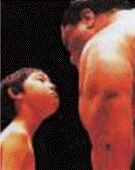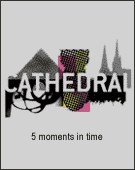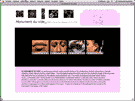The Video Haiku Engine is a series of transformations, manipulating inputted text data, in the form of a user-inputted haiku, into video positioning data. The process emulates a programming language compiler, with lexer and parser functions. The inputted tokens are matched against pre-built arrays of tokens, a series of rules determined stemming from the lingual interpretations of categories like 'real' and 'fake', 'high' and 'low' (in Bataille's sense), etc. Matching tokens manipulate values which become placement data for quicktime movies. The videos, created by Colorado-based network artist Rick Silva (Cuechamp), are then placed on the 'grid' of a HTML page via Cascading Style Sheets.
QuickTime plugin from Apple required.
Full Description
The Video Haiku Engine is a series of transformations, manipulating inputted text data, in the form of a user-inputted haiku, into video positioning data. The process emulates a programming language compiler, with lexer and parser functions. The inputted tokens are matched against pre-built arrays of tokens, a series of rules determined stemming from the lingual interpretations of categories like 'real' and 'fake', 'high' and 'low' (in Bataille's sense), etc. Matching tokens manipulate values which become placement data for quicktime movies. The videos, created by Colorado-based network artist Rick Silva (Cuechamp), are then placed on the 'grid' of a HTML page via Cascading Style Sheets.
QuickTime plugin from Apple required.
Work metadata
- Year Created: 2003
- Submitted to ArtBase: Thursday Jan 15th, 2004
- Original Url: http://www.node99.org/denature/pub/vhaiku/vhaiku.html
- Permalink: http://www.node99.org/denature/pub/vhaiku/vhaiku.html
-
Work Credits:
- eidolon, creator
Take full advantage of the ArtBase by Becoming a Member
Artist Statement
The Video Haiku Engine is a series of transformations, manipulating inputted text data, in the form of a user-inputted haiku, into video positioning data. The process emulates a programming language compiler, with lexer and parser functions. The inputted tokens are matched against pre-built arrays of tokens, a series of rules determined stemming from the lingual interpretations of categories like 'real' and 'fake', 'high' and 'low' (in Bataille's sense), etc. Matching tokens manipulate values which become placement data for quicktime movies. The videos, created by Colorado-based network artist Rick Silva (Cuechamp), are then placed on the 'grid' of a HTML page via Cascading Style Sheets.
QuickTime plugin from Apple required.





